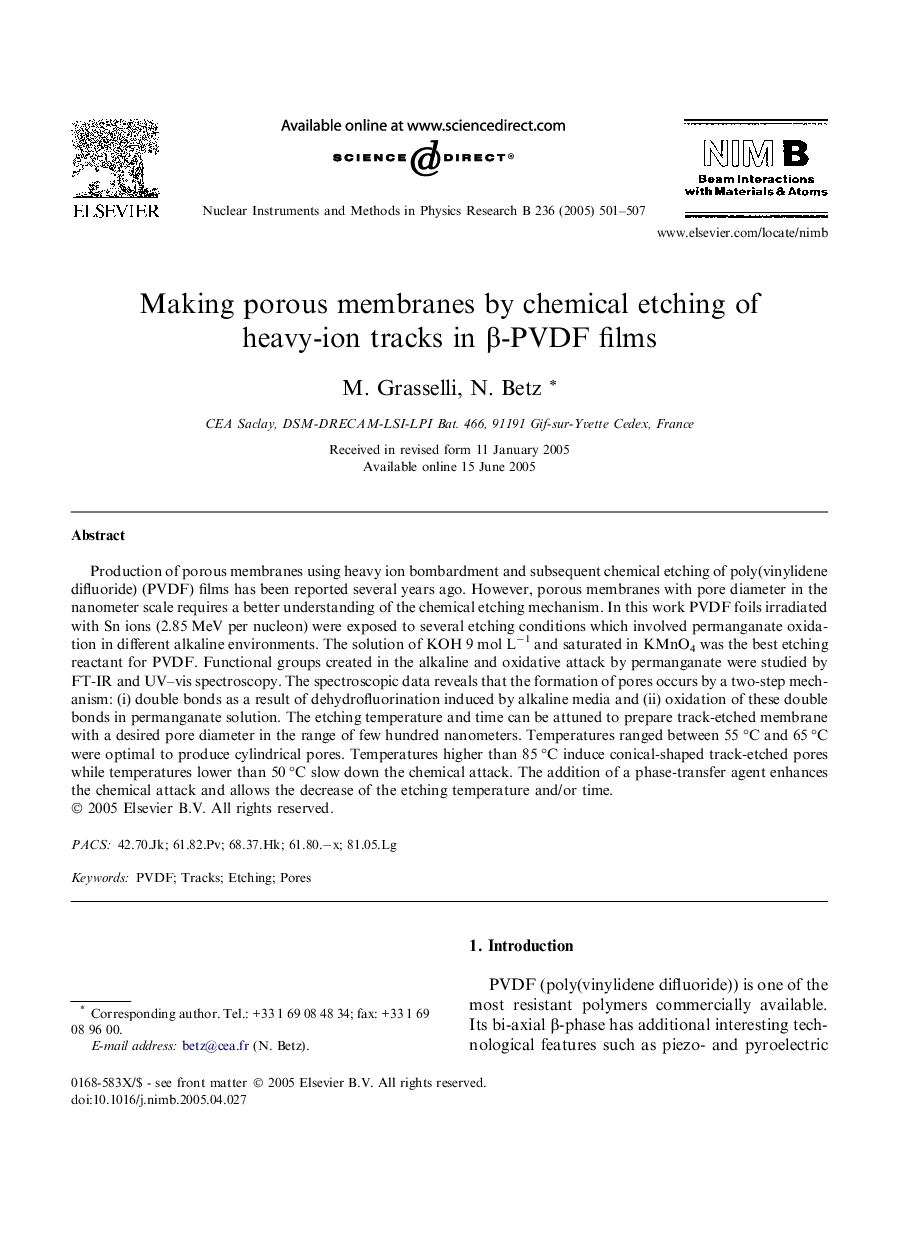| Article ID | Journal | Published Year | Pages | File Type |
|---|---|---|---|---|
| 9817881 | Nuclear Instruments and Methods in Physics Research Section B: Beam Interactions with Materials and Atoms | 2005 | 7 Pages |
Abstract
Production of porous membranes using heavy ion bombardment and subsequent chemical etching of poly(vinylidene difluoride) (PVDF) films has been reported several years ago. However, porous membranes with pore diameter in the nanometer scale requires a better understanding of the chemical etching mechanism. In this work PVDF foils irradiated with Sn ions (2.85 MeV per nucleon) were exposed to several etching conditions which involved permanganate oxidation in different alkaline environments. The solution of KOH 9 mol Lâ1 and saturated in KMnO4 was the best etching reactant for PVDF. Functional groups created in the alkaline and oxidative attack by permanganate were studied by FT-IR and UV-vis spectroscopy. The spectroscopic data reveals that the formation of pores occurs by a two-step mechanism: (i) double bonds as a result of dehydrofluorination induced by alkaline media and (ii) oxidation of these double bonds in permanganate solution. The etching temperature and time can be attuned to prepare track-etched membrane with a desired pore diameter in the range of few hundred nanometers. Temperatures ranged between 55 °C and 65 °C were optimal to produce cylindrical pores. Temperatures higher than 85 °C induce conical-shaped track-etched pores while temperatures lower than 50 °C slow down the chemical attack. The addition of a phase-transfer agent enhances the chemical attack and allows the decrease of the etching temperature and/or time.
Related Topics
Physical Sciences and Engineering
Materials Science
Surfaces, Coatings and Films
Authors
M. Grasselli, N. Betz,
